Good morning everyone, and welcome back to the Mirror Gallery here on Hipsters of the Coast. I’ve got quite the special treat today as I alluded to in my last article, with a special guest that’s joined me for the very first time! This artist has created more than 200 illustrations for Magic since he began with the game in 2011, as well as been part of numerous concept pushes with dozens of other artistic contributions over the last decade. Let’s waste no time and open the doors to the Mirror Gallery once again.
This is Behind the Brush: Adam Paquette and Zendikar Rising!
Good morning Adam, and welcome to the Mirror Gallery here on Hipsters of the Coast. As always, first things first: who are you, where are you from, and what do you do?
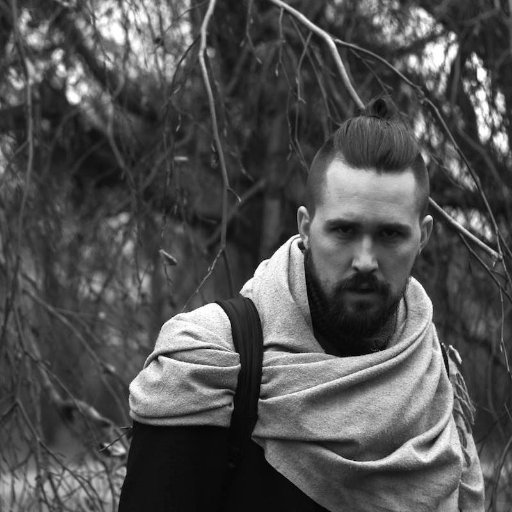
Good morning! These are fantastic, existential questions to which I wish I could reply at length. Who am I? Who are any of us? Do I even do anything or am I just an expression of a transcendental doer radiating through all materiality? Straight into the deep stuff! What I think I have learned so far is that I am a loosely assembled and ever changing collection of physical and mental elements currently arranged in the appearance of ‘Adam Paquette’, an erstwhile citizen of Australia now resident in Berlin, who is doing his level best to imitate a professional artist and illustrator and keep everything around me from degenerating irreparably into entropy. Well, that’s Monday to Friday.
In my time off, I have a large collection of hats I enjoy wearing; disheveled sketcher on the subway, electronic music connoisseur, awkward but enthusiastic interpretive dancer, and currently caged lover of shoestring travel. Magic has become the lion’s share of this thing I call a career over the last decade, but I’m also seriously invested in my secret second artistic life, which at the moment involves documenting secretive spaces through drawing where photography is banned, tall and wiry wax figurative sculptures slowly melting into each other from days of neglect, trying to help younger artists connect with their internal life in a world of extrinsic validation, and constantly rearranging furniture in my studio. I’m two parts expatriate cliché, one part coffee, and a pinch of ambitious hubris.
Wow, what an answer! You have more than 200 cards published for Magic so far—any favorites or outstanding sets/concepts/pushes that really resonated?
I’ve always moved between living in nature and the city. There is a part of my personality that really needs isolation and fresh air to think clearly and focus on what’s important. But if I spend too long like that, I can lose myself in distractions or start to fall in love with my own ideas. I need time in the city to connect with other people and get the social feedback on what I’m doing, and how important it actually is or isn’t. I love the density of human expression in a city, I’m a night person and I love exploring the unexpected synchronicities where all these different personal stories intersect. I found that Ravnica always brought those two parts of my soul together for a conversation.
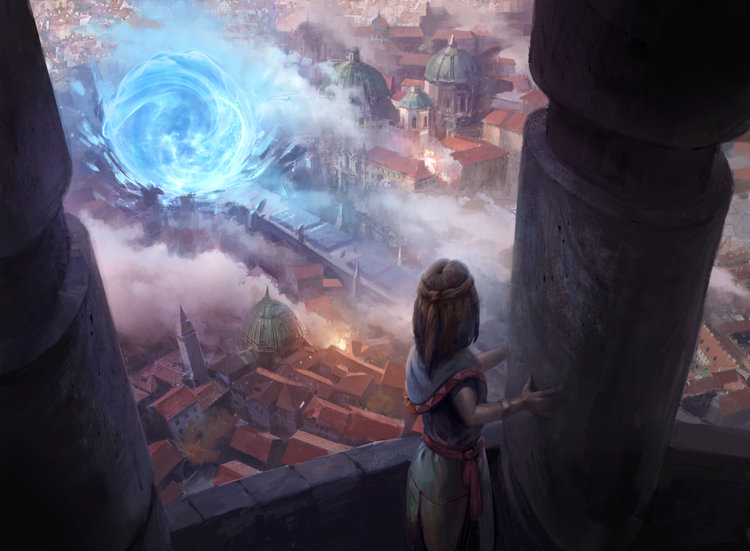
Ravnica at War by Adam Paquette. Digital.
I’ve always loved these wonderfully organic imaginations of overgrown, layered cities in fantasy fiction. China Mieville’s work comes to mind often. As does Paprika, the film. Beyond being, I think, the apogee of the expression of Magic’s mechanics through a planar design, I just find Ravnica viscerally desirable as a place to mentally explore. Even when it is me who is designing a corner of that world, I find myself wanting to know more.
Are landscapes you favorite thing to paint? It’s what we know you for, just curious as to maybe why?
When I started with Magic, they were certainly the focus not just of my art, but my life. My introduction to working with the game came through meeting Jeremy Jarvis at an art workshop in MA, which I arrived at fresh from half a year living in the jungle in Indonesia. My mind was completely absorbed in the landscape there, and I remember talking with Jeremy about wanting to work with Magic but being afraid that it required figurative/character skills I didn’t have. Luckily he appreciated my landscape work, and its darker tone was perfect for the concept push for Innistrad which was the first gig he enlisted me for.
He took a risk on me then and I’ll be forever grateful for it! In the decade since, I’ve become more and more curious about exploring humans and their different mental, physical, emotional and spiritual qualities through my own personal work. I’ve been working a lot with dancers and movement studies, as well as continuing my practice of working in public and investigating the artist/audience interaction in those public spaces; so in that sense, figurative work is very important to me now. But although that sometimes enters into my Magic work, it can also be intense and difficult so sometimes it’s really relaxing to be able to enter back into the landscape work. It is very forgiving and allows me to work intuitively and emotionally after I’m through the initial analytical phase of planning and sketching things out.
And of course, the longer I stay city-bound, the more important connecting to nature, even through my own mind, becomes. If we humans can’t keep our feet firmly planted on the ground, I worry what will happen as we float off into a world built from our own complicated mental realities. Nothing restructures your priorities faster than a good exposed hike at altitude without a parachute!
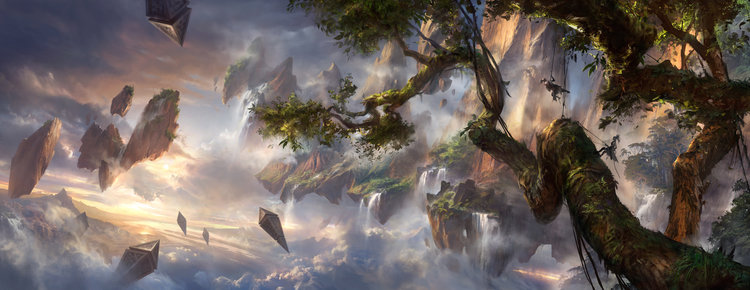
The Art of Magic: The Gathering- Zendikar (Book Cover) by Adam Paquette. Digital.
Zendikar Rising
Now onto Zendikar Rising! 17 artworks, 16 card illustrations, 14 cards. Have you ever done this much for a single set? And what sort of timeline are we looking at?
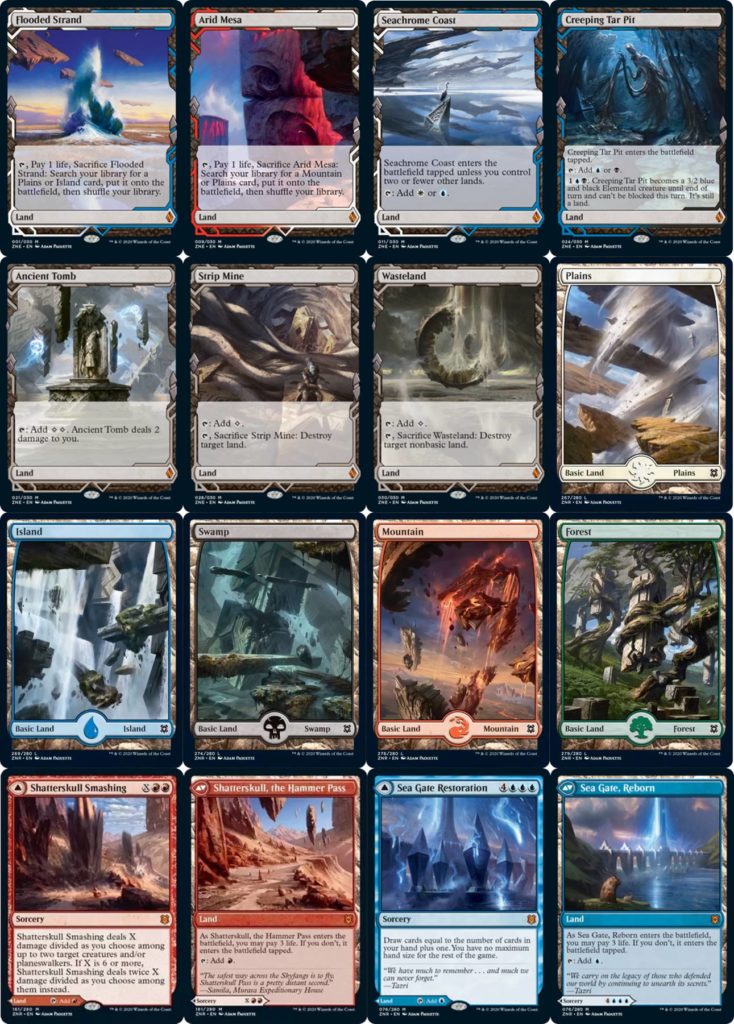
I’d have to double check but I’m pretty sure that’s a record! But these sets aren’t always commissioned together, and I think those cards were done over three or even four waves. I wish I could have done them all traditionally, but as the commissions kept coming in I couldn’t find the time to manage them all and so took a lot of them to finish digitally. That’s always a tough choice to make, but I also need time for everything else I have going on, and I don’t want to get fatigued with oil painting, either. If memory serves, work on Arid Mesa kicked off around April 2019 and the last few pieces were turned in just around Christmas time!
Let’s go through each of them piece by piece. First up is something folks might not have seen, the Zendikar Rising Key Art. Can you tell us about this illustration, and why key art is so important?
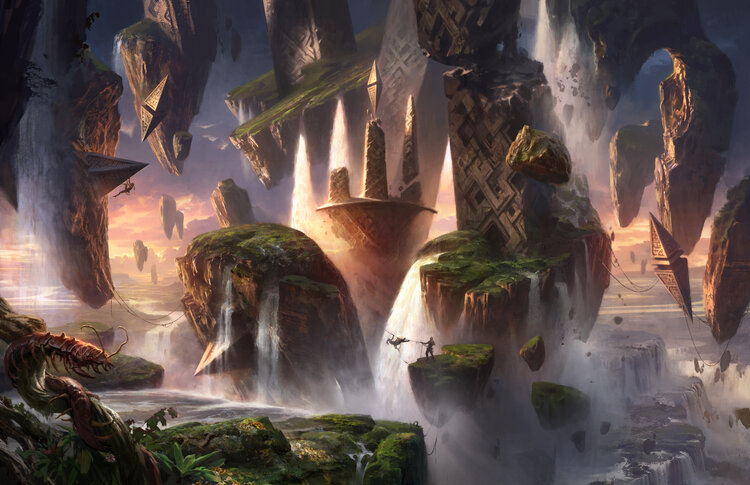
Zendikar Rising Key Art by Adam Paquette. Digital.
These key art pieces are always a kind of high water mark for me, testing out what I’m able to pull off at scale with a full panoramic and sometimes figure-inclusive approach. They are a good test because the intent of the image is at once so clear, and so complicated. The artist needs to take everything they know (and feel) about a given plane, which can be a lot, and come up with something that simplifies and clearly communicates that essence.
In card art, there is a sense of that unifying essence of a plane, but you can react against or contrast with that in a number of ways, or be selective about which part to communicate. (For instance, in Flooded Strand I really wanted a reflective, quiet moment of beauty in all the chaos that is Zendikar). But in key art you have to look that emotional tone square in the face and do your best to work with it directly.
It’s a fabulous piece that communicates exactly the essence of exploration that is Zendikar.
Next up is your cycle of five Basic Lands. You did a cycle back in Battle for Zendikar—how do these compare? What had to be different, and what did you keep the same?
In both cases, these were some of my favorite basics from any set. I think the vertical format is part of that. It’s a real relief, especially now that there is a bit more variety in art dimensions happening. But Zendikar always has these fantastic big, geometric structural shapes to play with (this time architectural, previously geographical moreso) that are so fun for composing. I think this time they were a bit more complicated, some of the architectural formations required more forethought where the older Zendikar lands were more organic and free flowing.
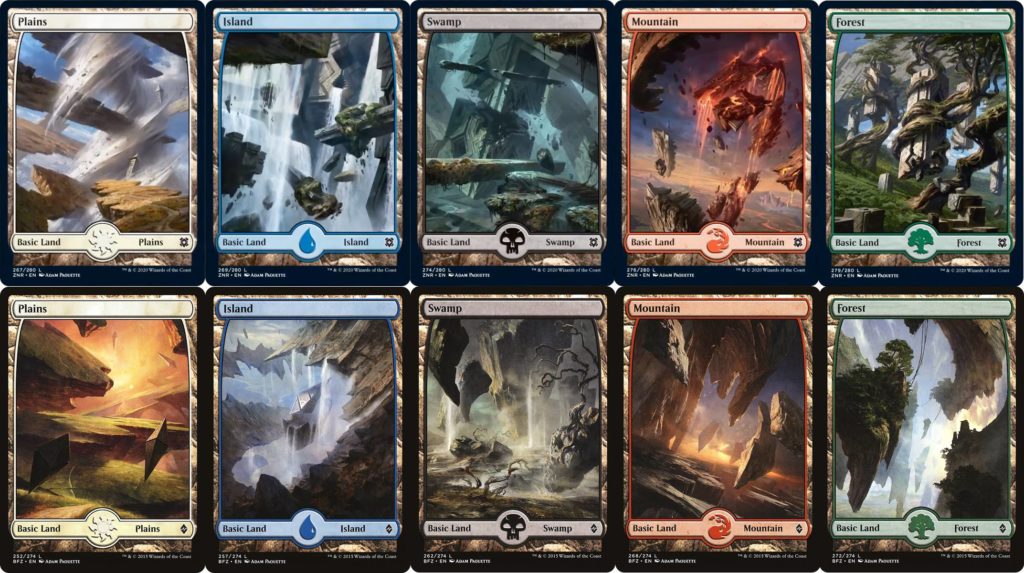
Zendikar Rising Basic Lands (top) and Battle for Zendikar Basic Lands (bottom)
You also had two of the brand new modal DFCs, double face cards that illustrate some incredible narratives about this world. How did you weave two different ideas into one complete story, front to back?
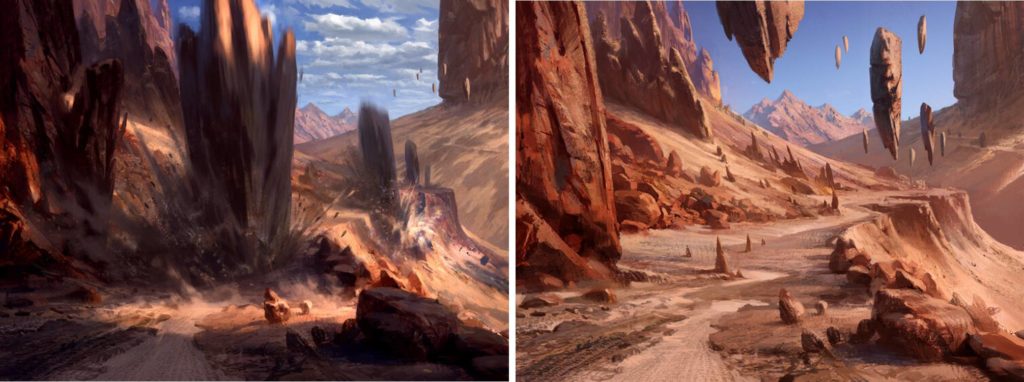
Shatterskull Smashing (Left) and Shatterskull, the Hammer Pass (Right) by Adam Paquette. Digital.
It was different in both cases. On the Shatterskull card, it was a matter of having a visual effect that ‘landed’ (har har) and so keeping the camera locked off in the same position was crucial to that. It’s probably as close as Magic cards can come to ‘special effects’ and hopefully a fun spot-the-difference. What may not be apparent at first is the actual geographic/climatic process that causes the rocks to fall.
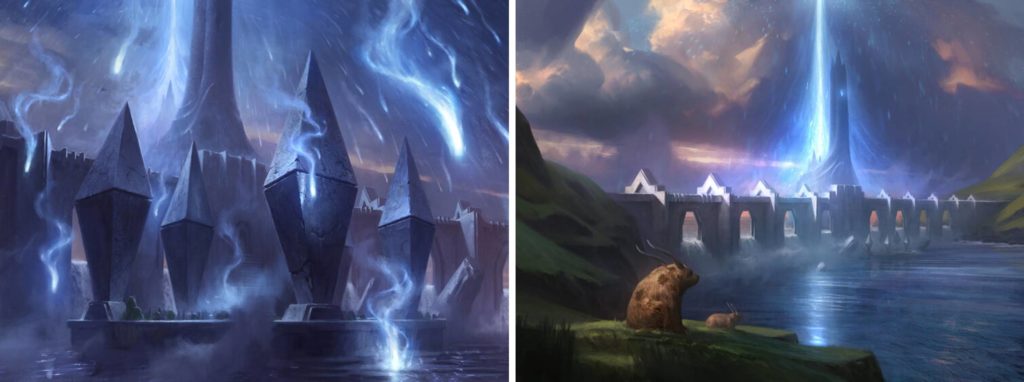
Sea Gate Restoration (Left) and Sea Gate Reborn (Right) by Adam Paquette. Digital.
In the case of the Seagate pair, I began with the close-up shot and the feeling of standing underneath fireworks, a moment of wonder, and then I wanted to pull back and show that from a distance. In Berlin around the time I was working on it, there were already people testing fireworks before the New Year season (it is a big deal here) and I was watching that from a rooftop, noticing how calm it is when watched from a distance.
Among these were two completely traditional paintings—both your Flooded Strand and Arid Mesa fetch land Expeditions. Is there any reason you chose these two in particular? How was the process the same or different from the others?
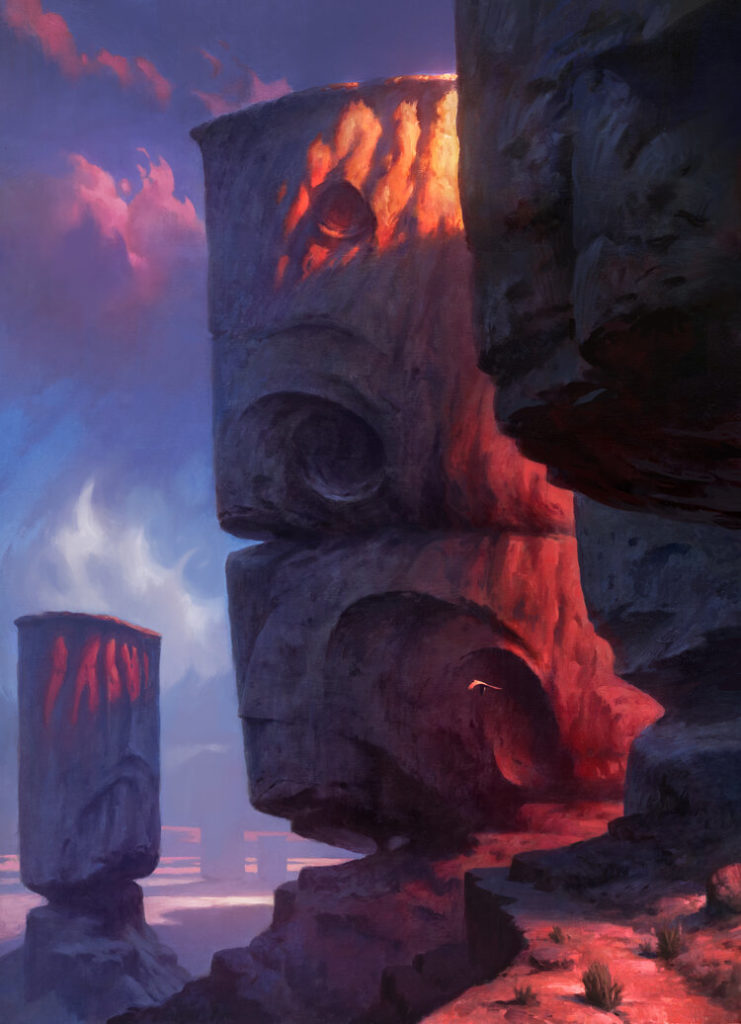
Arid Mesa by Adam Paquette, oil on aluminium Dibond (archival), approx.. 25.5” x 35.5”
Arid Mesa (and Scalding Tarn that appeared in Secret Lair) were commissioned separately, before the others, and I was able to focus just on those, which allowed me to go big and ambitious. I had also hoped and done preliminary work to complete the other lands traditionally, but there were other projects conflicting at the time and in the end I wouldn’t have had the needed time for drying and photographing the work, so I finished them digitally. It’s a situation that has come up a few more times since then, but I’m getting better with foresight and planning ahead to make sure I can commit to traditional work when the commissions are right for it.
Sometimes there is a piece I would love to do in oils, but there are technical reasons that I pass on it. Some things like very complicated architectural perspective, abundant magical glowy stuff, etc., still take too much time for the way I like to paint. I’m pretty lucky to be able to pick and choose, and I love both methods, so I think I’ll keep switching back and forth for the foreseeable future.
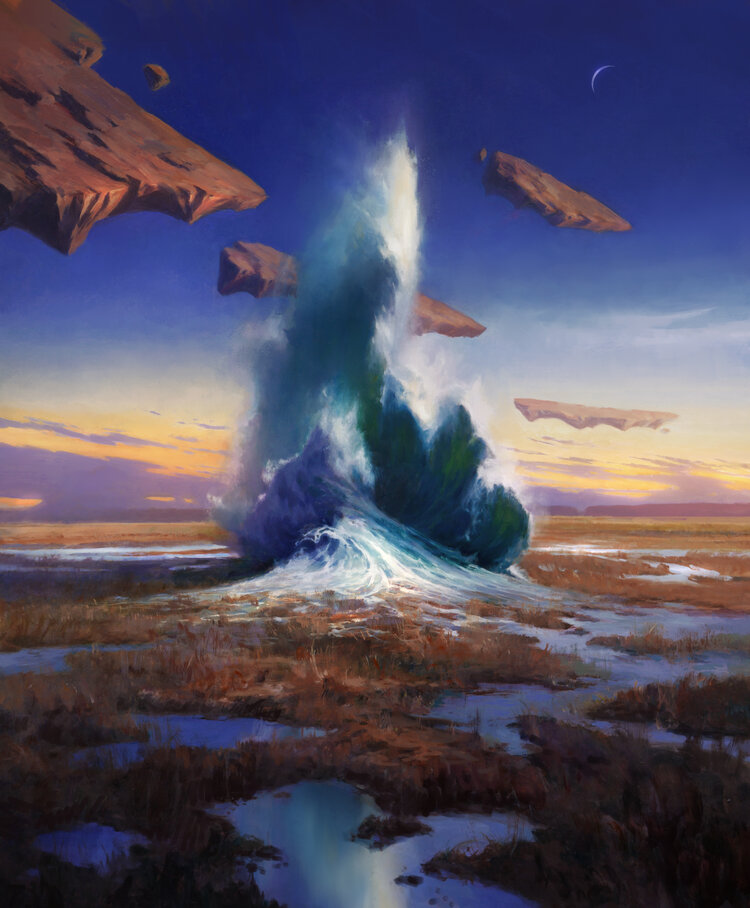
Flooded Stramd by Adam Paquette, oil on aluminum Dibond (archival), approx..20.5” x 24”
Flooded Strand is probably my new personal favourite piece for Magic and it’s not easy to see that one leave the studio for good!
Onto the other five Expeditions, and we see an entire spectrum: lands come alive, a serene seascape, a surrealist barren wasteland, and an ageless tomb. They’re all so different and yet, cohesive. What can you tell us about these—challenges, triumphs, breakthroughs, etc.
I just love these otherworldly, disturbingly serene moments. I love their simplicity. When I was sketching them out, I found these elegant solutions with big clear shapes that just felt stable, simple, evocative, without anything needing to be added.
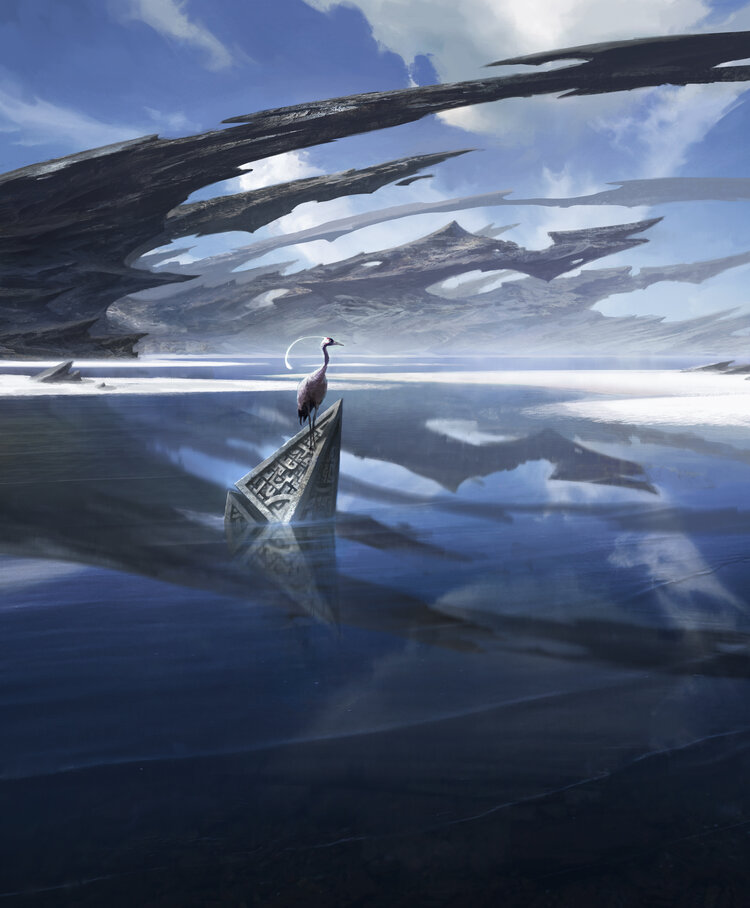
Seachrome Coast by Adam Paquette. Digital.
The idea for Seachrome Coast came to me as I was waking up from a dream, and the floating, disintegrating form of Wasteland kept playing in my head in slow motion for days.
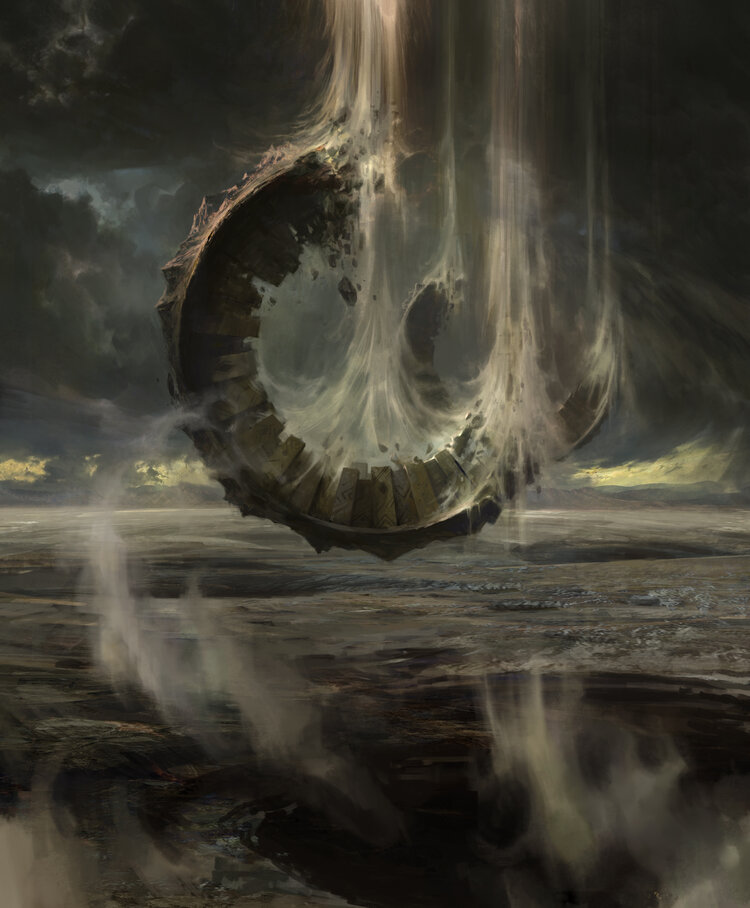
Wasteland by Adam Pquette. Digital Final.
Strip Mine, Creeping Tar Pit and Ancient Tomb were more complicated pieces to solve. The dark palette of Tar Pit needed to be carefully balanced to make sure it showed up well in print.
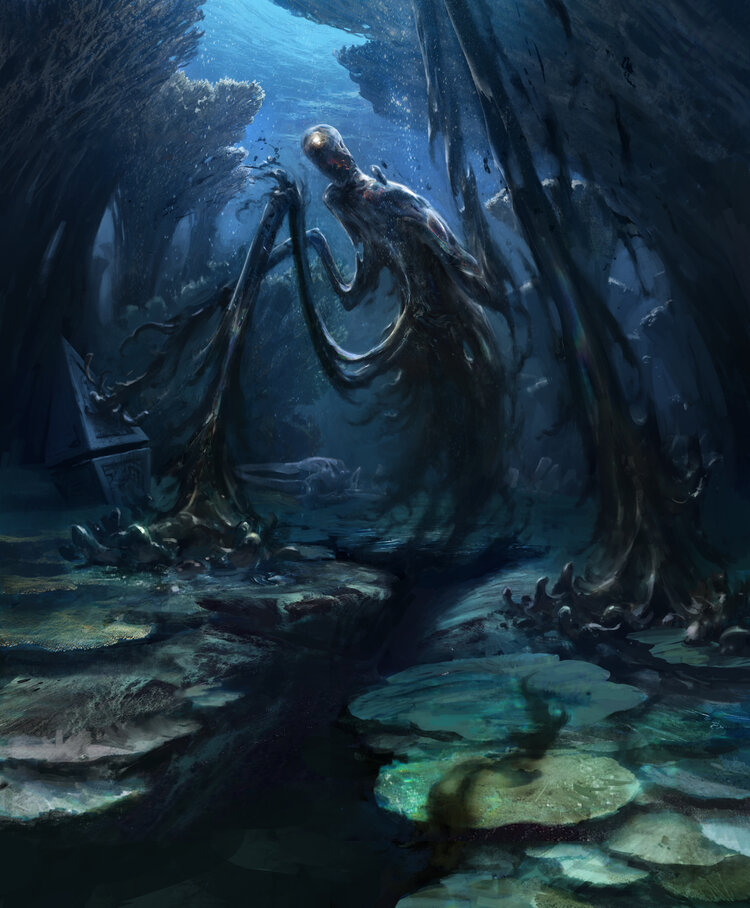
Creeping Tar Pit by Adam Paquette. Digital.
Doing a traditional color study for that was actually very helpful to make sure I wasn’t getting faked out by the brightness of my monitor. The perspective of Strip Mine was tricky, and Ancient Tomb also has a kind of funky trick of perspective to make us feel like we’re floating high in the air without seeing any horizon line.
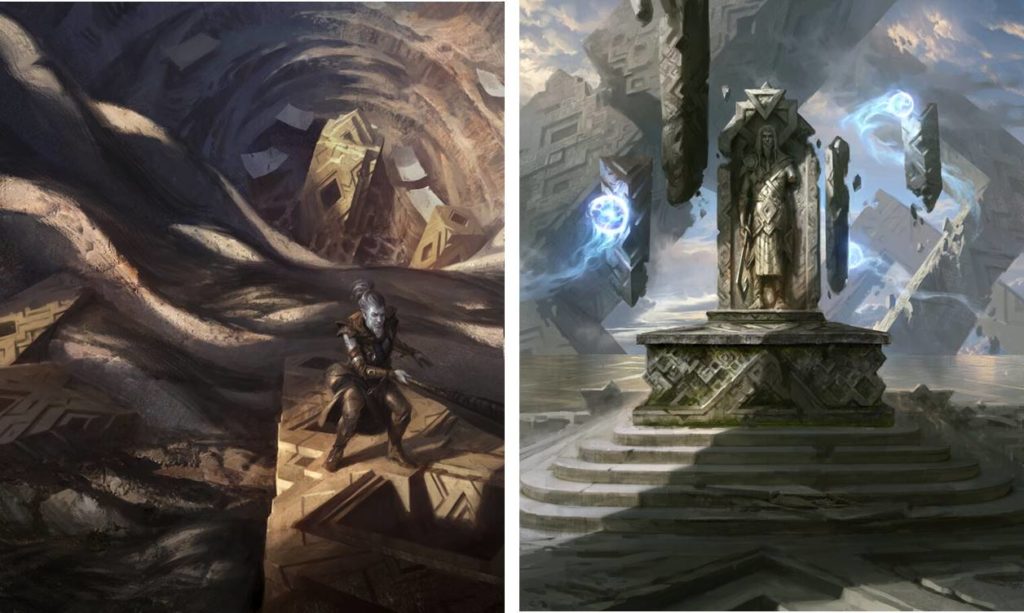
Strip Mine (Left) and Ancient Tomb (Right) by Adam Paquette. Digital.
Looking back—what was this experience like, creating such a huge part of this Zendikar plane?
Well I guess it occupied me for the better part of 2019, so it is all wrapped up with the many things that happened in my life that year. It was great to see its development as a plane and the crazy behind the scenes work on world development, but at the same time be able to reminisce about my previous work on Battle for Zendikar, as well as the original Zendikar work that I was looking at just before I first started working for Magic. And the experience will continue as we see how the release of this Zendikar plays out and goes on to influence what comes next for Magic. If my work has been an important part of the game for players, and given even one person the connection and inspiration to get out and connect with their natural world in some way, that’s a huge win for me.
I think your work represents exactly that. Just fantastic all the way around.
I think I know this answer, but do you have more Magic work in the pipeline yet to come?
Yeah, it’s not exactly a stunning twist at this point, but *Arnie voice* “I’ll be back…”
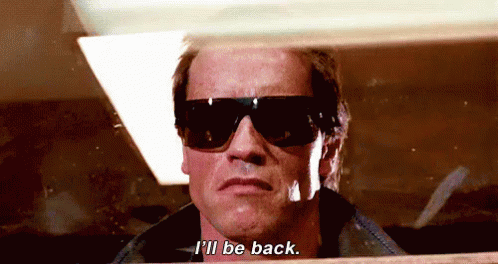
Finally, where can folks find you online to follow your work or buy your art?
If you can be forgiving of my sporadic updates and slow replies, you can follow me on Instagram at @adampaquette.mtg and Adam Paquette MTG on Facebook. And I have an INPRNT store.
Adam, thank you so very much for leading this expedition through your Expeditions and the rest of your work for Zendikar Rising. The landscapes really make this set what it is, and your work is so much of what we experience here. A phenomenal job, and one for the record books to be sure.
My pleasure, thanks for reaching out!
Wrapping Up
And so ends out incredible trip through this immense contribution to Magic’s latest expansion, Zendikar Rising. Being a part of so many facets of this plane, from key art to basic lands and from expeditions to the new double faced cards, Adam Paquette has had an incredible impact on how we experience this world. It would look vastly different without his hand in the set, and I’m so glad I could share exactly what he put into his artwork to make this set what it is.
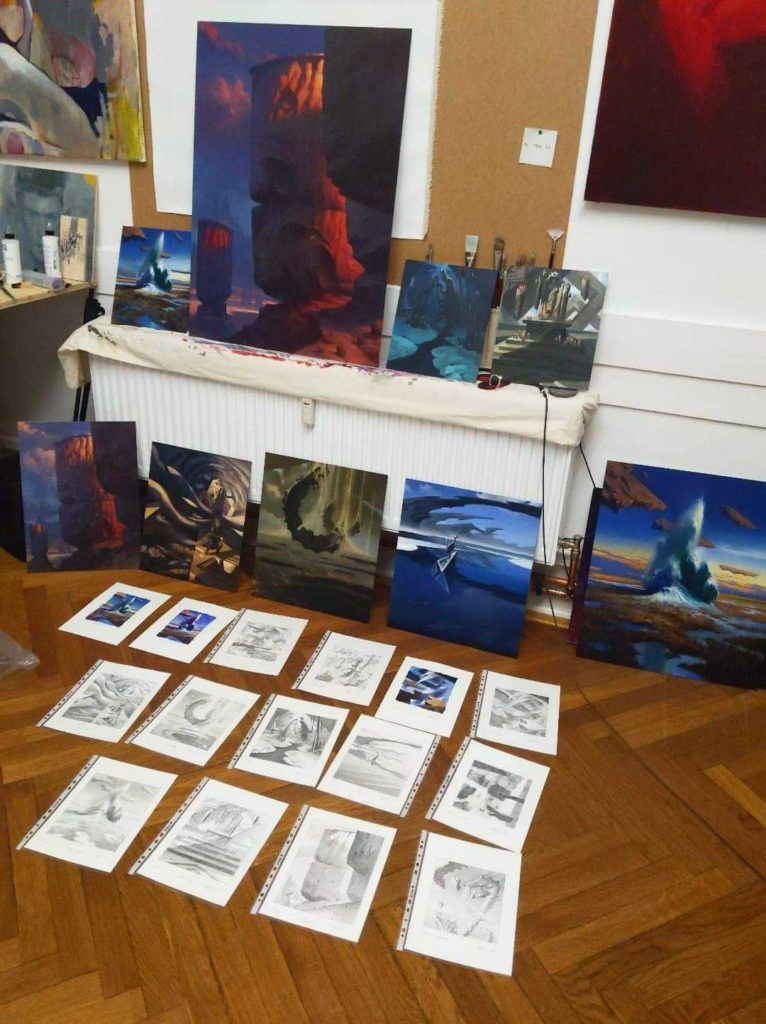
Just as an FYI, some of the preliminary pieces, including sketches, tonal studies, and color studies for these sixteen works are currently being auctioned over on the MTG Art Market on Facebook through this weekend. If that’s your thing, or you’re just curious to see more of this art in its physical form, jump on over to the group and check them out.
Looking forward, I hear word that Commander Legends previews are beginning in just a few short weeks, so I’d look for our attention to shift there towards the end of the month. I’m expecting some exciting things, and I’m sure you are too.
And finally, next Monday is the beginning of my brand new, ten article mini-series here on Hipsters of the Coast. I’m talking about some other art that’s making a splash within the genre, and you’re not going to want to miss it.
Remember, to see original #mtgart and other #vorthos related things, follow me on Twitter. Feel free to ask questions or retweet to continue the conversation. Stay safe, be excellent to each other, and I’ll see you back here again real soon.
Donny Caltrider has been playing Magic since 2002 and collecting original Magic art since 2017. He has an M.A. in Museum Studies from Johns Hopkins University and enjoys telling stories about art, objects, and the intersection of fantasy with real-life. You can find him on Twitter talking about #mtgart, museums, and other #vorthos related goodness. Follow along and continue the conversation!

